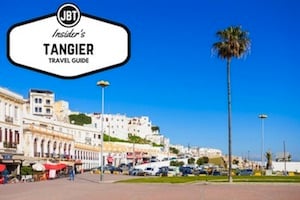 Not far from the High Atlas Mountains are the mountains of the Jebel Sahro. The starkness of this range belies the beauty found there. Although this area is not as well traveled by trekkers it is well worth the trip. The landscape is awash in mesas with flat tops, deep gorges and pinnacles that have been twisted from volcanic activity. The view includes expansive almond groves and date palms.
Not far from the High Atlas Mountains are the mountains of the Jebel Sahro. The starkness of this range belies the beauty found there. Although this area is not as well traveled by trekkers it is well worth the trip. The landscape is awash in mesas with flat tops, deep gorges and pinnacles that have been twisted from volcanic activity. The view includes expansive almond groves and date palms.
Because of the terrain, planning a trek in this region comes with many options. Regardless of which direction you choose to walk, you’ll be met with satisfying scenery. You can launch your Sahro trek from any one of three points. Two towns in the north make good starting points, Boumaine du Dades and Kelaa M’Gouna. You can also take off from the southern village known as N’Kob. There are several Moroccan tour operators in these three cities that provide services.
Plan ahead for this trek while you are in Marrakesh or Ouarzazate by stocking up on supplies. You may be able to purchase small items at villages along the way, but it is best to come prepared with the majority of your supplies. It is recommended that you take a tent with you, or you can take advantage of the gites which provide shelter in case of snow.
Hiking the Sahro Loop takes approximately five days and allows you to remain on the same side of the mountain. There are several villages along the trail. Along the way, you’ll be able to enjoy views of the High Atlas Mountains, the Jebel Sahro and the Tete de Chameau cliffs.
By the third day on the trail, you’ll be able to spot the Needles of Sahro, a spectacular cliff that slopes to the Amguis River. The Dades Valley greets you on your final day on the trail.
Winter is the best time to trek this area even though you may encounter colder temperatures and some snow. It is extremely hot in the summer, and the area is prone to many snakes and scorpions. Snow frequently falls in those areas above 4,000 feet, but most of the time the trails can be traversed by trekkers. Be sure to carry plenty of water with you no matter when you trek this region because dehydration is a common problem.
Posted by JoAnna Haugen, managing editor at Journey Beyond Travel and author of Kaleidoscopic Wandering.
Photo by kaje_yomama.








